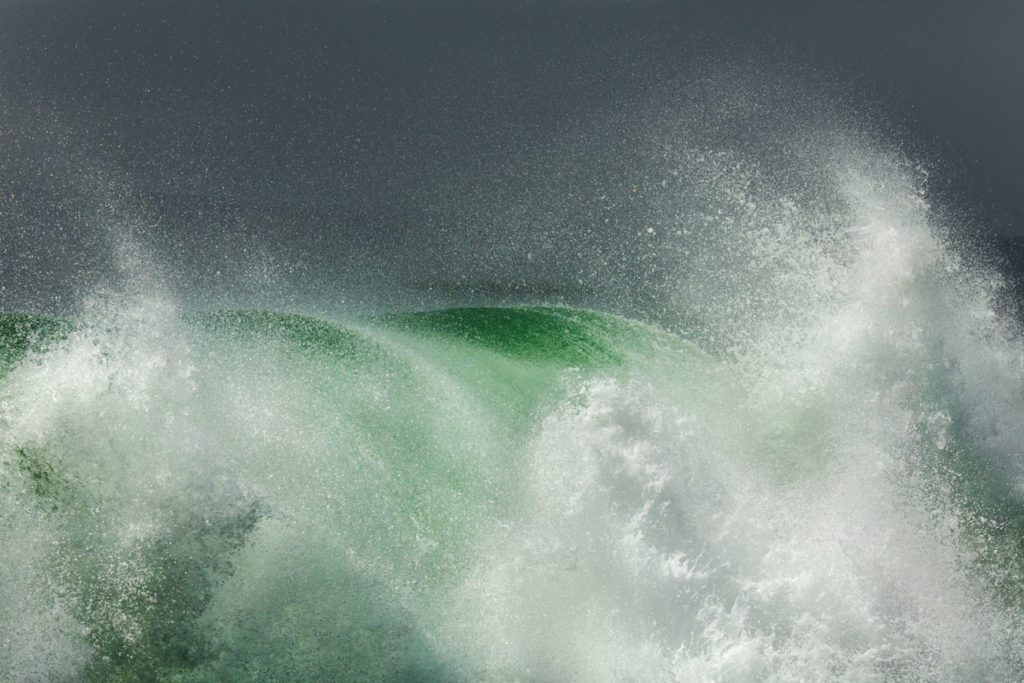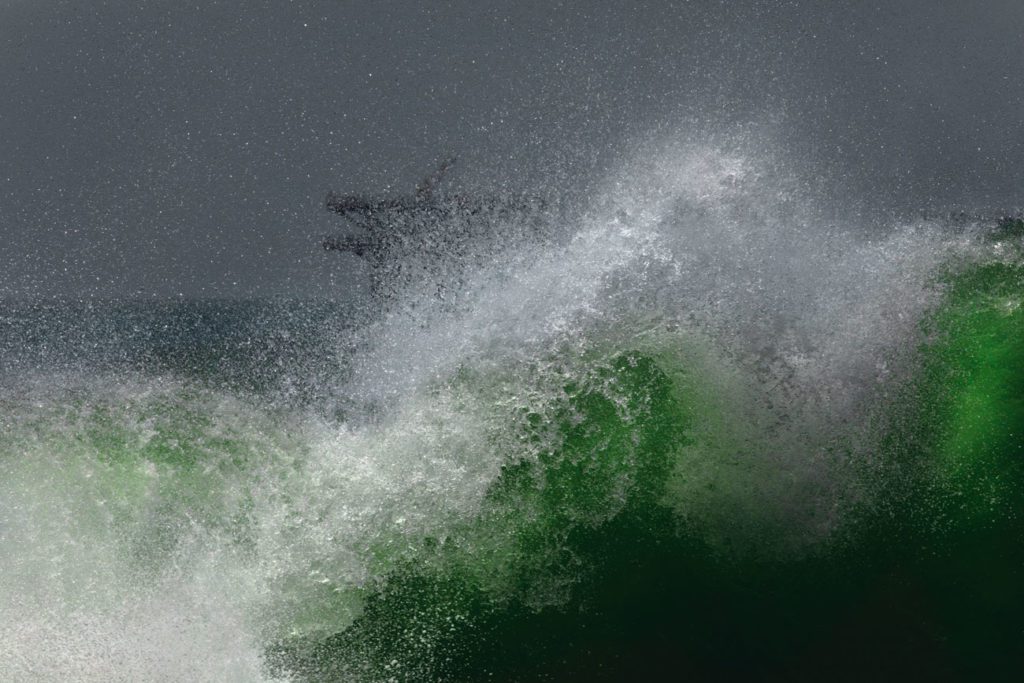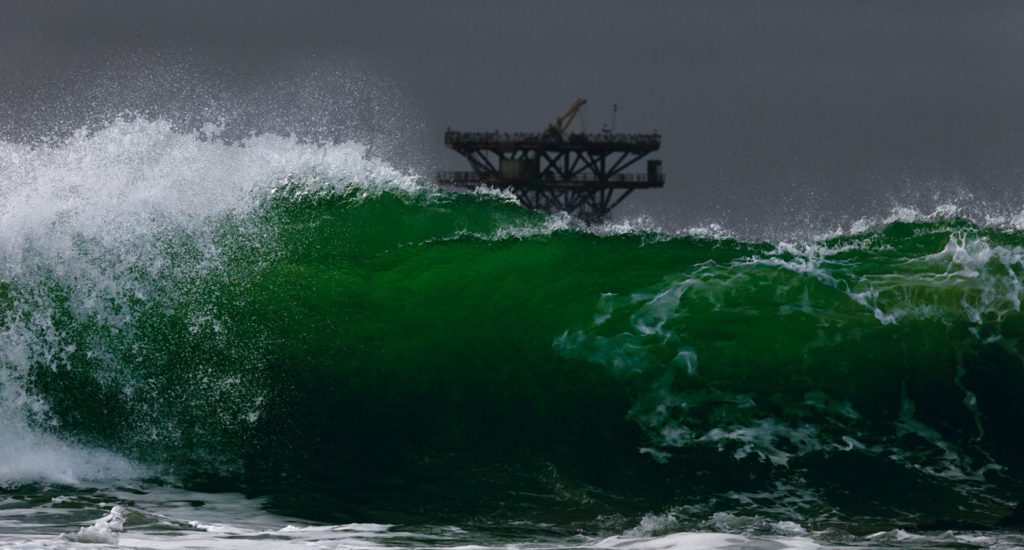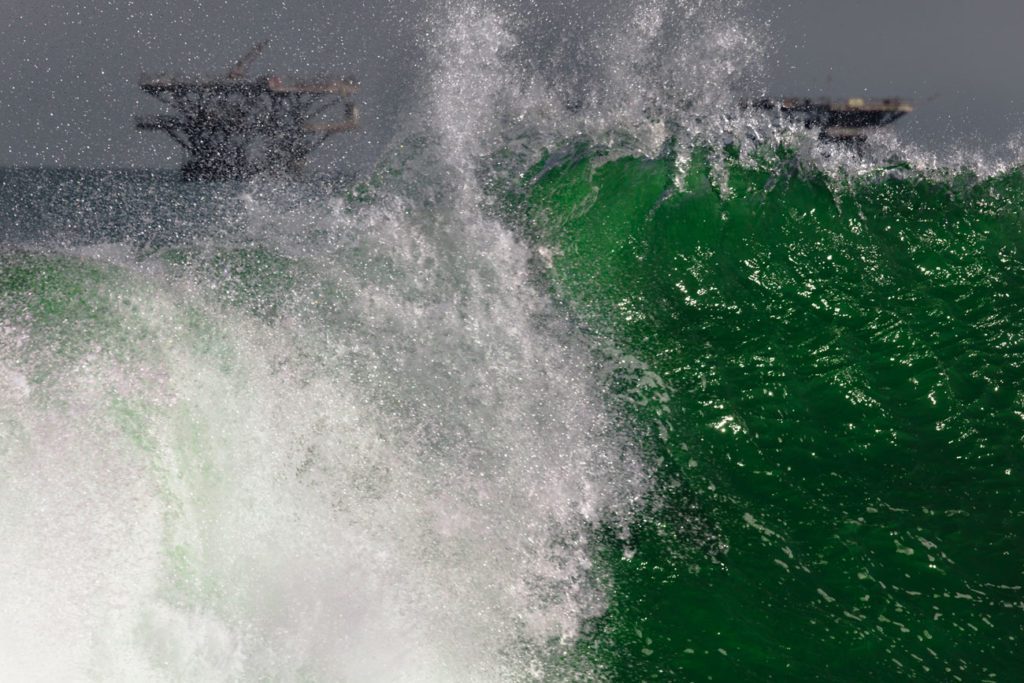Francesca Piqueras
Francesca Piqueras’s photographs capture the influence of humanity on the landscape. Her images present the calculated transformation of the environment. From cut jagged, snow-covered mountains in Italy and waves crests at the fore of oil rigs in South America to massive bursts of water swelling through dams in China, Piqueras aims to capture the complex visual testament of man shaping nature.
Piqueras references the Anthropocene, our current geological era, and human behavior’s vast impact on our ecology. The industrial activity captured by Piqueras offers a disparate view of economic pursuits, the extractive nature of these processes, and the resulting aftermath on Earth’s natural topography. Finally, Francesca Piqueras’s body of work serves a purpose. Like a photographic essay, her pictures document the physical transmutation of organic matter for economic purposes and their resultant, discarded forms. Like the stranded husk of a cargo vessel abandoned on the shores of Patagonia, this form, initially made by extracting organic materials from the Earth, is now swallowed by the sea. This natural cycle of construction and decay is central to Piqueras aesthetic inquiry, a poetic quandary on the effects of economic progress and industrialization. Her photographs ultimately deal with the reciprocal nature of our ambition to harness the environment and its ability to transform and break down our attempts to control it.
Francesca Piqueras grew up in a family of artists. Her parents were close to artists such as Marcel Duchamp, Man Ray, and Salvador Dali. She would often see them in summer in Cadaqués. In this artistic milieu, she grew up as a solitary and attentive observer. From the age of thirteen, she discovered her passion for making videos and received a camera as a gift. She studied art history and cinema and worked as an editor without abandoning her passion for photography.
It was not until 2007 that she presented her black and white photographs for the first time. Her first series focused on an urban world, magnifying human traces that can often be seen in the city. Marked by Michelangelo Antonioni’s “Il Deserto Rosso,” her interests focused on a different type of tracing: those of our industrial civilization. She switches to color photography and presents new works in 2011, “The Architecture of the Absence,” a series taken on ship dismantling sites in Bangladesh. Later, in 2012 she makes, “The Architecture of Silence,” with photos of scuttled freighters in Mauritania. Today the artist works on several other projects about industrial relics all over the world. Her latest body of work deals with fire and iron smelting. Earth, Water, Air, and Fire are the building blocks of the world, and their transformation has been key to her artistic oeuvre.
SELECTED MUSEUM COLLECTIONS:
• Eretz Israel Museum, Tev Aviv, IL
• Palazzo Ducale di Massa, Massa, IT
• Beijing World Art Museum, Beijing, CN
Photography & Works
-

Francesca Piqueras
Mar 5 Add to cart -

Francesca Piqueras
Mar 6 Add to cart -

Francesca Piqueras
Mar 7 Add to cart -

Francesca Piqueras
Mar 8 Add to cart -

Francesca Piqueras
Marbre 1, Italy Add to cart -

Francesca Piqueras
Marbre 2, Italy Add to cart -

Francesca Piqueras
Marbre 3, Italy Add to cart -

Francesca Piqueras
Movimento 10, Italy Add to cart -

Francesca Piqueras
Movimento 11 Add to cart -

Francesca Piqueras
Movimento 19, Movimento, Italy, Chine (2 images) Add to cart -

Francesca Piqueras
Movimento 6, Chine Add to cart -

Francesca Piqueras
Movimento 7 Add to cart -

Francesca Piqueras
Movimento 9 Add to cart -

Francesca Piqueras
Petropavlosk 5, Sibérie, In Fine Add to cart -

Francesca Piqueras
Point 3, Panic Point, Perou Add to cart -

Francesca Piqueras
Sarmiento I, Apres la Fin, Patagonie Add to cart -

Francesca Piqueras
Territoire 13, Territoire Tranquille Add to cart
News & Articles

Red, Yellow, Blue and All the Colors in Between: A Photographic Survey of Color and Form

Simple Pleasures: The Quiet Glow

Francesca Piqueras on Man and Nature

Beyond The Horizon: The Changing Global Ecology

Planet Earth

Dialogues With Great Photographers – Francesca Piqueras

